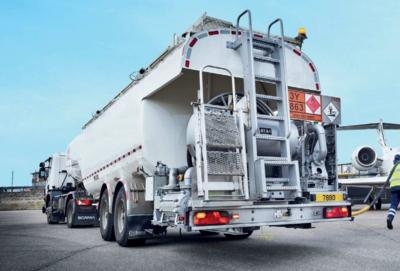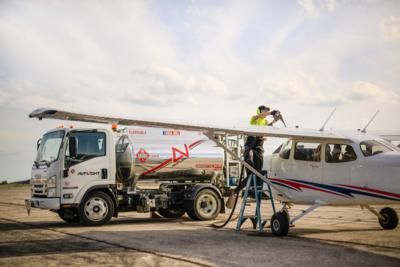Sat, Sep 17, 2022
Recent Developments in Lead-Free Fuel Brings Unique Considerations for Avgas Providers
The National Air Transportation Association has released a white paper regarding recent developments in unleaded avgas following the STC approval for General Aviation Modifications Inc’s. (GAMI) G100UL.

The Association's GA Fuel Subcommittee brought together a range of industry minds to create recommended best practices for the deployment of the unleaded fuel. The group threw its support behind the Eliminate Aviation Gasoline Lead Emissions (EAGLE) Initiative’s goal of an entirely lead-free general aviation ecosystem by 2031. Until now, the industry lacked a real, easily scaled, 100LL replacement that would require a minimum of infrastructure and provide maximum interoperability to ensure industry-wide takeup of the new tech. The FAA’s recent issuance of Supplemental Type Certificates approving the use of GAMI’s 100 octane unleaded avgas product, G100UL, in all spark-ignition piston aircraft and engines in the general aviation fleet turns that industry gap on its head. Now, a large plurality of aircraft can easily begin using unleaded avgas, with minimal fuss compared to some previous solutions that required specially formulated fuels with limited market penetration. NATA notes that
this major step forward will take some work, but affirms that the launch producer for G100UL, Avfuel, will soon be joined by a handful of other companies in expanding availability. Swift Fuels, Phillips66/Afton Chemical, and Lyondell Chemical/VP-Racing are all actively pursuing approval to produce and sell GAMI's new offering.

“With the spotlight glowing ever brighter on unleaded aviation fuels, industry stakeholders have been proactively seeking information on considerations for offering more environmentally friendly fuel options,” stated NATA Managing Director of Industry and Regulatory Affairs Megan Eisenstein. “NATA is pleased to offer guidance to assist them in taking a leadership role in advancing the national effort to reduce lead emissions from piston-engine aircraft through safe and effective unleaded avgas implementation.”
The white paper assists the unleaded push by suggesting 4 key phases for those fuel providers offering the 100LL replacement. Those phases - Discovery, Preliminary Communications, Infrastructure Considerations, and Final Communications - will help delineate efforts as stakeholders look to spread awareness and ease their area into safe and effective unleaded fuel use.
“It is critical to have a misfueling prevention program in place, and to implement comprehensive management of change processes and perform risk assessments when introducing new fuels,” said Steve Berry, NATA Managing Director of Safety and Training. “Keeping lines of communication open between pilots and FBOs throughout the fueling process is also essential.” NATA reminds the industry of its Safety 1st program, as well as its soon-to-be-updated programs to prevent misfueling.
More News
He Attempted To Restart The Engine Three Times. On The Third Restart Attempt, He Noticed That Flames Were Coming Out From The Right Wing Near The Fuel Cap Analysis: The pilot repor>[...]
Make Sure You NEVER Miss A New Story From Aero-News Network Do you ever feel like you never see posts from a certain person or page on Facebook or Instagram? Here’s how you c>[...]
From 2009 (YouTube Edition): Leading Air Show Performers Give Their Best Advice for Newcomers On December 6th through December 9th, the Paris Las Vegas Hotel hosted over 1,500 air >[...]
Aero Linx: NASA ASRS ASRS captures confidential reports, analyzes the resulting aviation safety data, and disseminates vital information to the aviation community. The ASRS is an i>[...]
“For our inaugural Pylon Racing Seminar in Roswell, we were thrilled to certify 60 pilots across our six closed-course pylon race classes. Not only did this year’s PRS >[...]
 NTSB Final Report: Rutan Long-EZ
NTSB Final Report: Rutan Long-EZ ANN FAQ: Turn On Post Notifications
ANN FAQ: Turn On Post Notifications Classic Aero-TV: ICAS Perspectives - Advice for New Air Show Performers
Classic Aero-TV: ICAS Perspectives - Advice for New Air Show Performers ANN's Daily Aero-Linx (06.28.25)
ANN's Daily Aero-Linx (06.28.25) Aero-News: Quote of the Day (06.28.25)
Aero-News: Quote of the Day (06.28.25)




